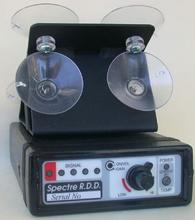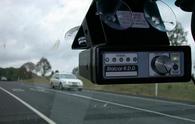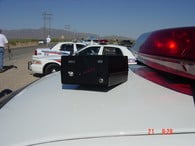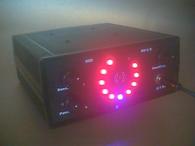[fusion_builder_container hundred_percent=”no” equal_height_columns=”no” menu_anchor=”” hide_on_mobile=”small-visibility,medium-visibility,large-visibility” class=”” id=”” background_color=”” background_image=”” background_position=”center center” background_repeat=”no-repeat” fade=”no” background_parallax=”none” enable_mobile=”no” parallax_speed=”0.3″ video_mp4=”” video_webm=”” video_ogv=”” video_url=”” video_aspect_ratio=”16:9″ video_loop=”yes” video_mute=”yes” video_preview_image=”” border_size=”” border_color=”” border_style=”solid” margin_top=”” margin_bottom=”” padding_top=”” padding_right=”” padding_bottom=”” padding_left=””][fusion_builder_row][fusion_builder_column type=”3_4″ layout=”3_4″ spacing=”” center_content=”no” hover_type=”none” link=”” min_height=”” hide_on_mobile=”small-visibility,medium-visibility,large-visibility” class=”” id=”” background_color=”” background_image=”” background_position=”left top” background_repeat=”no-repeat” border_size=”0″ border_color=”” border_style=”solid” border_position=”all” padding_top=”” padding_right=”” padding_bottom=”” padding_left=”” margin_top=”” margin_bottom=”” animation_type=”” animation_direction=”left” animation_speed=”0.3″ animation_offset=”” last=”no”][fusion_text columns=”” column_min_width=”” column_spacing=”” rule_style=”default” rule_size=”” rule_color=”” hide_on_mobile=”small-visibility,medium-visibility,large-visibility” class=”” id=”” animation_type=”” animation_direction=”left” animation_speed=”0.3″ animation_offset=””]
Feb 17, 2006 – NIWOT, CO –
Know the facts about Radar Detector Detectors are electronic
Radar Detector Detectors are electronic, radio frequency (RF) scanners, designed to search for a specific radar frequency, called a local oscillator (LO) frequency. These devices, also known as RDD (we always shorten product names, don’t we?), are used by police to search for vehicle drivers using a radar detector. Two of the best radar detectors are the Bel STi Driver and theValentine One radar detector. This is important to police where the local laws stipulate that the use of radar detectors can not be used; i.e., illegal for use. Most of Canada, except BC, has a law against the use of a radar detector. The state of Virginia in the USA bans the use of radar detectors. DOT bans the use of any kind by commercial truck drivers. Most European countries ban the use of radar detectors; most notably France, Germany and Italy. These countries and Australia below have very harsh fines for drivers, who use radar detectors. All of the eastern provinces of Australia ban the use of radar detectors.
Japan and Korea ban the use of radar detectors. Taiwan and Hong Kong presently permit radar detectors. Singapore and Malaysia ban the use of radar detectors. China, who really knows, but I suspect they do not want to lose their speed photo trap income, so they may incorporate RDD technology. VG2 was the first tool used by police in the 1990s to search for drivers with radar detectors. VG2 was used around the world, but not much in the USA until DOT (Department of Transportation) and Virginia enacted their laws in the USA. DOT enforces commercial trucks, therefore, they regulate the use of radar detectors with truck drivers. That is to say, DOT outlawed radar detectors of any kind by a commercial truck driver in the USA. A brief understanding of how an RDD device locates a radar detector. All radar detectors are essentially a scanner, searching for the radar gun RF signals: X band is 10.525GHz, Ku band is 13.45GHz, K band is 24.125GHz or 24.15GHz, Euro Ka Narrow-band is 33.3 GHz, USA Wide-band Ka is 33.4GHz, 34.7GHz and 35.5GHz. The Radar Detector searches for the radar gun frequency, and the RDD searches for the radar detector frequency. The RDD searches for the local oscillator (LO) frequency emitted by a noisy radar detector. In the 1990s, the LO frequency used by all detector mmanufacturers was at 11 GHz (11 gigahertz, 11,000,000,000 hertz). OK, too technical. Anyway, VG2 was introduced to find this radar detector frequency. In the late 1990s, a competitor came out in Australia, providing the Spectre I, which searched for the same LO 11GHz frequency. Good Radar Detector companies fought back by changing their LO to 15GHz, and that worked for about a year, until Spectre II came out, scanning for 11 and 15GHz. So the Radar Detector manufacturers started trying to hide the LO. V1 came out with a Titanium metal case and reduced the V1 LO RF leakage, making it difficult for Spectre II to find a V1. Valentine made some very good improvements. Likewise with Bel Vector products and Escort Passport products, both who improved thier products, by reducing LO RF leakage and improving the outer enclosure. We focus on these companies, becuase they are generally the best manufacturers for radar detectors.
Valentine One, Escort 8500 X50 and Bel RX65 provided the best invisibility to VG2, Spectre I and Spectre II from 100 to 300 feet distance, which is quite good. Most poor radar detectors could be detected by VG2 and Spectre II as far as 1600 feet, which is pathetic. And then the world changed. In 2005 along comes Spectre III and VG4 radar detector detectors. The Spectre III and VG4 were supposed to be the “end all RDDs” for police. But, I didn’t think that either new RDD was a major improvement, as tested by SML in June 2005 in El Paso, TX. Then Bel introduced their STI Driver, tested by SML in October 2005, and it proved to be truly invisible to all RDD: VG2, VG4, Spectre I, Spectre II, Spectre III, also known as Stalcar in Australia, NZ and Asia. Talk about “Kick Ass” performance, the STi Driver proved to be 100% invisible to all RDD. Many companies say they are invisible to RDD, but they neglect to say “how invisible” to RDD their product is. Even Bel Vector, RX65 Pro, Escort 8500 X50, Valentine One say their products are invisible to RDD, and while these products offer superb invisibility to RDD, they are not 100% invisible to all RDD as of January 2006. The Bel STi Driver was to be available in January 2006, but the product release was moved to March 2006 to ensure STi specifications were adhered to in production products. Beltronics stepped up to the plate and made some additional advances to the STI. Most notably, it has dual, front radar antenna receiver.
X band is separate from K and Ka frequencies. This means the K and Ka can be calibrated more accurately and provide way more signal to noise (S/N) improvment. It means greater K and Ka distance detection, better than the RX65, which was already the best in the world. It also means fewer false radar alerts, again much better than the RX65. Nobody wants to constantly hit the brakes to false radar alerts. The STi Driver is packaged in a highly polished, metal carrying case. The STi includes a magnesium outer shell to help reduce its LO leakage. It is tough as a tank, looks very nice, provides a great alert display. More importantly, it operates like a dream to detect X, K, Ka, POP3 radar and does it without giving any RDD alert, even when the RDD is driving by your vehicle. The only thing I would add to it, is an RDD alert, so that drivers know Smokey is hunting for you. Having said that, while the STi DRIVER is 100% electronically invisible, some drivers will want to ensure the Bel STi DRIVER is not easily viewed from the outside of the vehicle as the police drive by. We offer high performance only. If you want the best, that is what we provide. Backed up by superb customer support.
[/fusion_text][fusion_text]
Call 1st Radar Detectors in Canada at 250-324-8004 or in the USA at 720-635-3931 to discuss your requirements and we will figure out what what you need for your business or your vehicle, and find a US/Canada installer for you. Regards, John Turner
STiR Plus, HP905 Quad Laser Jammer, APC Power Control
STiR Plus, HP905 Quad, HP905 Dual and ProDB-2 Dual PhotoBlocker
Contact 1st radar Detectors at [email protected] to purchase a radar detectors, laser jammer, radar laser jammer; and a photo blocker on passenger cars, pick up trucks, SUVs, and motorcycles in the UK, USA, Australia, Canada, Europe, South America and New Zealand.
[/fusion_text][/fusion_builder_column][fusion_builder_column type=”1_4″ layout=”1_4″ spacing=”” center_content=”no” hover_type=”none” link=”” min_height=”” hide_on_mobile=”small-visibility,medium-visibility,large-visibility” class=”” id=”” background_color=”” background_image=”” background_position=”left top” background_repeat=”no-repeat” border_size=”0″ border_color=”” border_style=”solid” border_position=”all” padding_top=”” padding_right=”” padding_bottom=”” padding_left=”” margin_top=”” margin_bottom=”” animation_type=”” animation_direction=”left” animation_speed=”0.3″ animation_offset=”” last=”no” element_content=””][fusion_text]
| ||
| Spectre III RDD, initially manufactured in AUS under the name of Stalcar. Spectre III replaces Spectre II, which replaced Spectre I. | ||
| ||
| The Stalcar version of Spectre III. This is what is used in Australia and New Zealand, and parts of Asia. | ||
| ||
| The Spectre III (also known as Stalcar in Australia, NZ, Asia) has a weakness of getting too hot, thus the reason for the temperature indicator. Not good if the Temperature LED comes on. | ||
| ||
| The VG2, which has been replaced by the VG4, searched for the older radar detectors that operated at about 11GHz. The VG2 detects only 11GHz local oscillators (LO), thus can not detect any of the new radar detectors operating at an LO frequency of 15GHz; such as Bel RX65, Bel RX75, Escort 8500 X50, Escort SR7, Valentine One, etc. | ||
| ||
| The VG4 shown above is in active mode, detecting a radar detector nearby. The VG4 has a wider Local Oscillator (LO) scan, thus theoretically, it can detect the old radar detectors operating with an LO of 11GHz and the new radar detectors operating with an LO of 15GHz. As you get closer to the radar detector with the VG4, more LEDs light up indicating the VG4 is getting closer to the radar detector. | ||
[/fusion_text][/fusion_builder_column][/fusion_builder_row][/fusion_builder_container]






Recent Comments